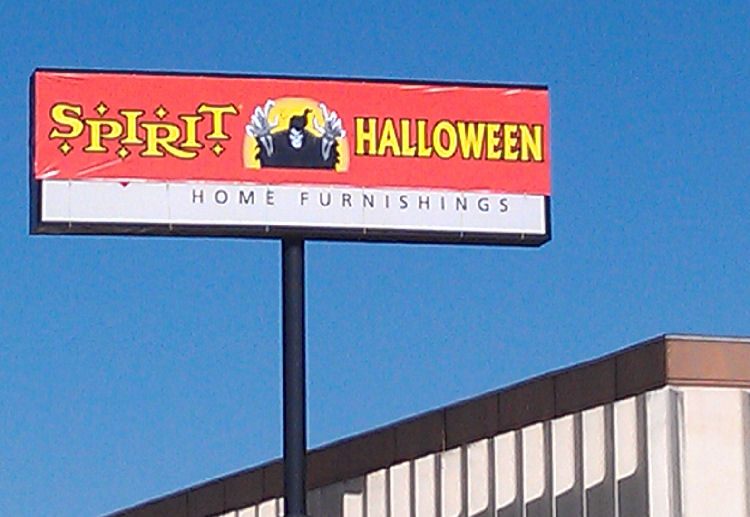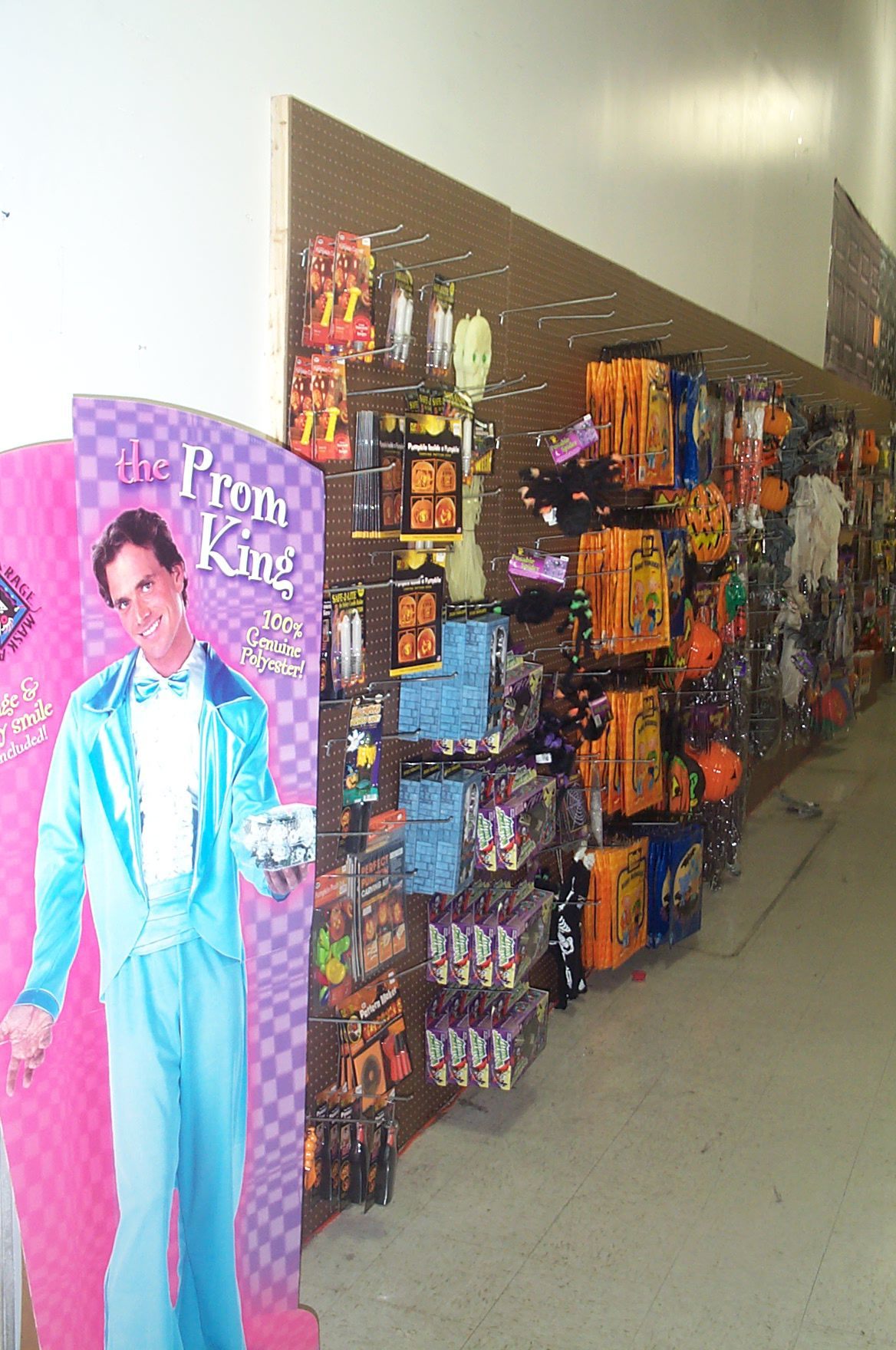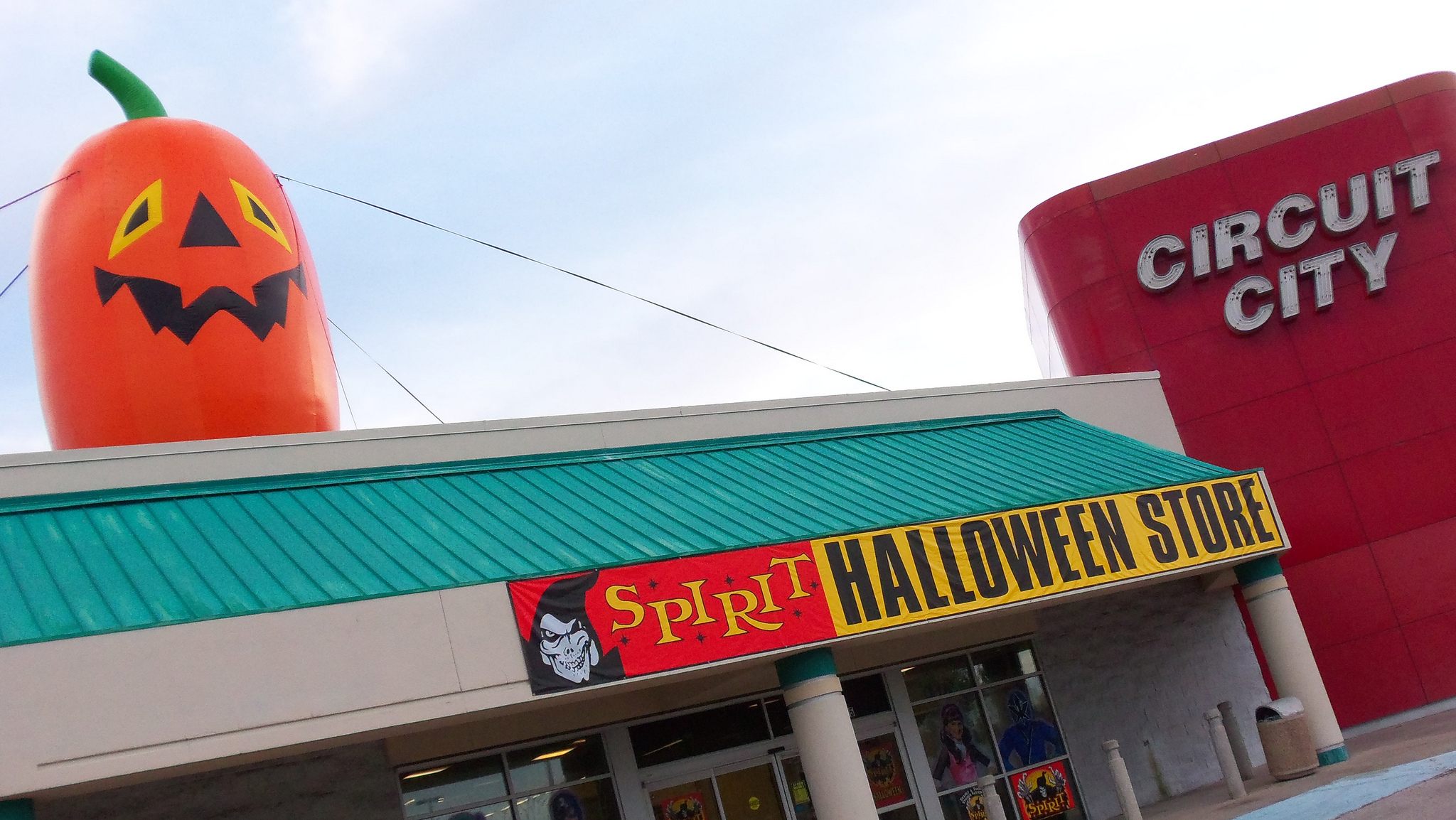The Surprising Success of Halloween Pop-Up Stores
The seasonal stores are not just recession-proof—they flourish when strip malls are bare.
A version of this post originally appeared on Tedium, a twice-weekly newsletter that hunts for the end of the long tail.
“I didn’t invent temporary sales. But I feel like I invented temporary Halloween.”
In the early 1980s, Joseph Marver had a problem. The San Francisco-based dress retailer couldn’t for the life of him convince anyone to buy his dresses. But he did see that many of his potential customers were passing up his store to go to a nearby costume shop.
That shop eventually gave Marver an idea that would change the way we celebrate a major holiday for good. According to a Newhouse News Service piece from 2000, Marver put his dresses away for a month, and started selling costumes of his own. Sales went through the roof, of course.
The next year, he ditched his dress store and put up a display in a mall, and had even more sales success. Soon enough, he was running with the Halloween store concept all along the West Coast.
Meanwhile, on the other side of the country, another store, New Jersey’s Party City, was quickly figuring out the same thing: that Halloween was a huge draw for customers, and that they should program their entire retail cycle around Halloween, not Christmas.
Party City eventually grew into the world’s largest chain of party-supply sellers (with an unusual lean on Halloween, which made up a quarter of the company’s sales in 2014), but it was Marver’s concept, known as Spirit Halloween, that proved the most unusual and influential.
Marver’s chain, which carries on average more than three times the number of Halloween items a traditional store might, grew quickly in the West and Midwest, eventually drawing the notice of another prominent novelty retailer, Spencer Gifts, which grabbed it in 1999.
From there, the chain—and the basic concept—exploded.

Why does a seasonal pop-up Halloween store work so well? Here are five reasons:
- Buildings stay empty for long periods of time: It’s harder to find a new tenant for a retail building than it is a home, and as a result, shopping centers often have empty spaces for a number of months or even years before a replacement appears. CityLab notes that Spirit Halloween and other chains take advantage of these market weaknesses by maintaining strong relationships with commercial real estate owners, who would much rather accept a temporary lease than no lease at all.
- Halloween stores are shape-shifters: If you have a big-box space available, Spirit Halloween can make it work, but if all you’ve got is a box the size of a Radio Shack, it’s more than enough to sell Halloween goods. On its website, Spirit says that it can make spaces as large as 50,000 square feet and as small as 3,000 square feet work for its needs. The real issue, says the chain, is that there needs to be a significant amount of car traffic in the area, along with “awesome visibility.”
- Inventory can be reused: Unlike technology or fashion, most Halloween gear doesn’t really go out of style, which means that it can be returned and reused repeatedly over time, keeping production costs low. Franchisees benefit from this setup, because they can pay a deposit on the merchandise before launching the store, then sell back the goods to the Halloween store chain and receive merchandise credit from Spirit. “This way retailers don’t have to fund all of the inventory in advance and they don’t have to carry inventory over to next year either,” Spirit Director Ann Sullivan told Specialty Retail.
- The pop-up nature allows for planning time: Spirit Halloween founder Joseph Marver noted that, because had so much lead time between the beginning of the year and Halloween, he was able to spend much of the year plotting for the year’s big trends. If Spider-Man was going to be big that year, he was able to get a Spider-Man costume in production. But you always have to plan for the unexpected hit, however. “You’d better have some money left over for sleepers—movies you didn’t know would be a box-office smash and kids were going to want,” Marver added in his comments to Newhouse News Service.
- There’s another big seasonal holiday immediately after: Just two months after Halloween is Christmas, another kind of holiday that also works well in a retail context. Halloween Adventure, a smaller Halloween store chain, has been known to convert the locations to Smart Toys stores, which are intended to jump on the Christmas trend.

Halloween stories have another aspect that makes them different than normal chain stories. When regular retail is doing poorly, the Halloween store is in a position to do really well.
Case in point: The increased presence of the Halloween store in the years after the 2008 economic recession, when regular retailers were leaving homesteads at larger locations. It’s bad enough when a boutique store leaves the mall, but when the Sears leaves, it becomes a huge problem.
In the years after the recession, two trends happened: One, Halloween stores became a lot more common around the country, and the stores started taking up larger and larger spaces. During its 30th anniversary in 2013, Spirit Halloween had 1,050 locations—a huge surge from the five dozen or so it was running when Spencer bought it in the ’90s. (For comparison’s sake, J.C. Penney currently has 1,063 locations and Toys “R” Us has 1,132 locations.)
The reasons that these Halloween chains grew so quickly around the recession is best explained by the death of chains like Circuit City and CompUSA. Both died around roughly the same time—just before or during the recession. Both companies left behind massive real estate spaces, taking up tens of thousands of square feet each. And, because it was the recession, odds were low that new tenants were going to take their place anytime soon.
Vacant big-box retail spaces are simply harder to rent out than smaller ones.

As a result, Spirit Halloween took over 83 former Circuit City locationsin 2009, the year that the famous electronics chain closed.
Temporary Halloween stores were once seen as bad business, somewhat of a blight on the retail landscape, but the recession basically forced commercial real estate owners to stop being so picky.
And there’s even a chance that the success of a Halloween store might set the stage for a full-time tenant. Party City is a prominent part of the temporary-store trend through its Halloween City subsidiary. According to National Real Estate Investor, the publicly traded company uses the Halloween stores as a testing ground: If a temporary Halloween City store does particularly well at a location, Party City may decide to open up a permanent location at that spot.
By re-animating mummified retail spaces, Halloween City, Halloween Express, Spirit Halloween, and others are doing the economy a bit of a service. They’re offering the public something it knows they’ll like, while giving real estate companies an opportunity to get a modest return on their investment.
The Halloween pop-up store phenomenon is very much still with us today—this year, Spirit Halloween is up to 1,150 locations. And the trend may not fade anytime soon.
However, the success of the model is likely to become harder and harder as the years go on, not because people aren’t interested in Halloween, but because retail is doing a lot better these days.
CityLab notes that around 2014 or so, the shopping centers and strip malls have started to fill up again, in part because new malls aren’t being constructed fast enough to keep up with tenant demand. In fact, the International Council of Shopping Centers literally reported this very point, based on research from the real estate firm JLL, back in December.
That means that it’s going to cost more for a Halloween chain to rent out a retail crypt in the years to come—because there are fewer crypts than usual these days.
But even if ghosts are going to be harder to find in the future, it doesn’t make it any less spooky once you do find one.
A version of this post originally appeared on Tedium, a twice-weekly newsletter that hunts for the end of the long tail.













Follow us on Twitter to get the latest on the world's hidden wonders.
Like us on Facebook to get the latest on the world's hidden wonders.
Follow us on Twitter Like us on Facebook